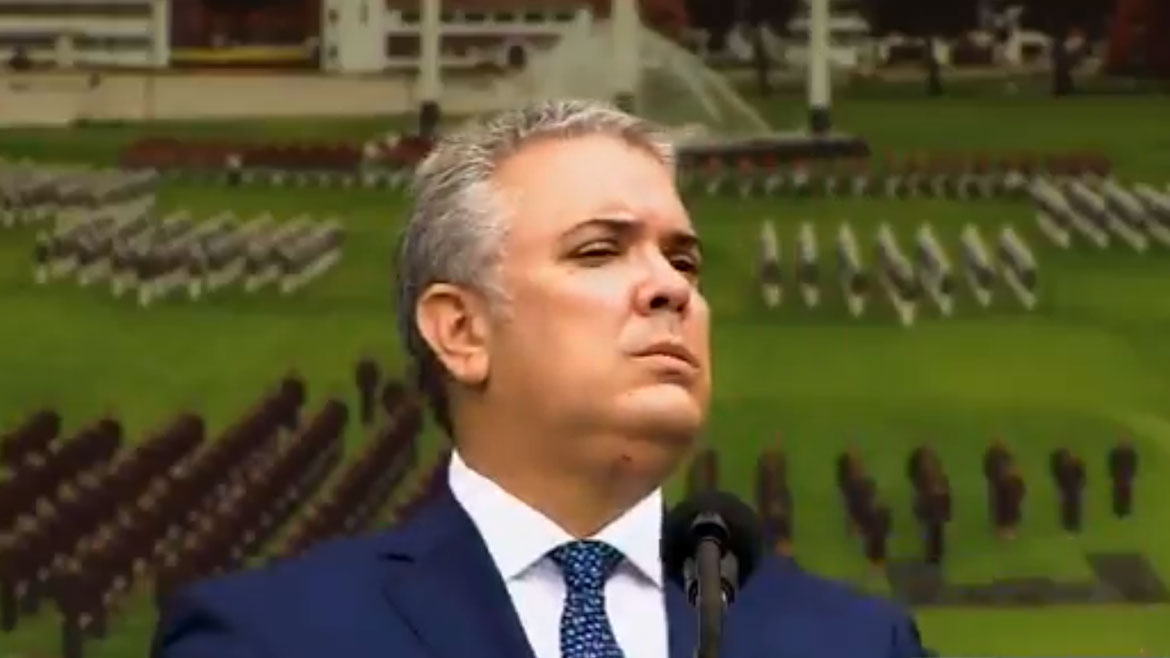President Ivan Duque’s failed security policy has allowed Colombia’s illegal armed groups to grow significantly in the past four years, according to a report.
Guerrilla and paramilitary groups have additionally taken advantage of the “structural weakness of the Colombian State” to expand their territorial control, think tank Paz y Reconciliacion (Pares) said.
The result has been a disaster, according to statistics of the United Nations, which said Friday that some 274,000 people were affected by violence in the first two months of this year alone.
Pares’ report, “Plomo Es Lo Que Hay,” analyzed how Duque’s failure to implement a 2016 peace deal with guerrilla group FARC and his failure to implement a coherent security policy benefited illegal armed groups.
Duque’s false promises
The president vowed to “defeat those who want to be in illegality with deterrence and the offensive capacity” during a visit to the troubled Catatumbo region in October 2018.
Duque ended up doing the exact opposite.
Homicides and massacres surged in Catatumbo as well as in other former FARC territories.
Homicide rates
Massacres
The mass killings of community leaders and rights defenders also escalated between 2016 and 2020.
This deadly violence dropped last year, but appears to have intensified again in the first months of 2022, Pares said.
According to the National Victims Unit, more than 800 social leaders have been assassinated during the peace process.
The prosecution has been unable to establish a suspected perpetrator in more than 80% of the killings.
In 16 cases, the alleged killers were members of the security forces.
The social leaders’ suspected killers
More than 300 former FARC members were assassinated while they were taking part in the government’s reintegration programs, according to the United Nations.
Violence and armed conflict displaced almost 190,000 people between 2016 and 2021, according to the international organization.
More than 60,000 people were trapped in their homes or villages because of armed conflict last year alone.
Forced displacement and confinement
The illegal armed groups’ expansion
All major illegal armed groups were able to expand their territorial control since Duque took office, according to Pares.
Paramilitary group AGC, a.k.a. the “Gulf Clan,” became Colombia’s largest illegal armed group after the demobilization of the FARC and expanded its activity from 180 municipalities in 2018 to 241 this year.
Evidence indicated that AGC’s territorial expansion may have been facilitated by corrupt elements within the security forces, Pares confirmed.
Guerrilla group ELN has expanded its organization to some 4,800 members of which more than 2,500 would be in arms, according to Pares.
Colombia’s longest-living guerrilla group allegedly expanded its territorial activity from 90 municipalities in 2018 to 184 this year.
Groups formed by former FARC guerrillas who either refused to demobilize or rearmed during the peace process have expanded territory under their control from 60 in 2018 to 180 this year.
Mainly due to their aggressive recruitment techniques, these groups would now have more than 4,600 members.
The security situation in Colombia has deteriorated to a point that some 274,000 people were affected by violence in the first two months of this year alone, the United Nations said Friday.
Norwegian Refugee Council director Francesco Volpi
The violence is affecting members of the security forces as much as civilians.
Last year, 148 members of the security forces were killed while on duty compared to 94 in 2020.
Duque’s far-right Democratic Center party vowed they would “tear” the 2016 peace deal “to shreds” ahead of the 2018 elections.
Four years later, the president appears to have kept that campaign promise and condemned Colombia to a new cycle of violence.


